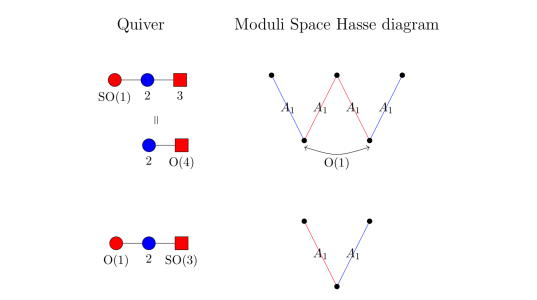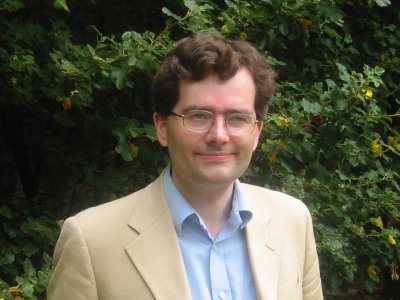One of the main themes of geometry in recent years has been the appearance of unexpected dualities between different geometric spaces arising from ideas in mathematical physics. One famous such example is mirror symmetry. Another kind of duality, which I am currently investigating with collaborators from Oxford and Imperial College, is symplectic duality.
The spaces here are holomorphic symplectic - so they have a complex structure and a symplectic 2-form which is holomorphic for that complex stucture. In practice there is usually some additional data, a compatible Riemannian metric, that describes a hyperkahler structure. The duality is between different holomorphic symplectic manifolds that arise as the Higgs and Coulomb branches of a physical theory with $N=4$ supersymmetry. One interesting feature is that this duality can change dimensions - the Higgs and Coulomb branches can be of different dimensions.
Holomorphic symplectic spaces often arise via a kind of quotient construction called the hyperkahler quotient, due to Nigel Hitchin and his collaborators Karlhede, Lindstrom and Rocek. The idea is that we start from a hyperkahler space with a symmetry and produce a new one in which the symmetry has been factored out - this is not simply the quotient of the original space, but rather the quotient of a subvariety defined by the vanishing of the so-called momentum map, a concept whose roots lie in Hamiltonian mechanics. The beauty of the construction is that the original space can be very simple, even flat space, but the quotient can be highly nontrivial.
If the symmetry group by which we quotient is an Abelian torus, this leads us to the objects called hypertoric varieties. Like their classical toric variety cousins, their study reduces to combinatorial convex geometry. Symplectic duality is well understood for such spaces, and is in fact a manifestation of a classical concept, Gale duality, that has long been known to convex geometers and linear programmers.
If the group is non-Abelian, the situation is less clear. It is believed that if the Higgs branch is a hyperkahler quotient of a linear space by a group $K$, then the Coulomb branch will be birational to the quotient by the Weyl group of the cotangent bundle of the complexified dual maximal torus of $K$. Physically, the birational transformations can be interpreted as quantum corrections to the classical picture of the Coulomb branch.
Our current work focuses on finding candidates for the symplectic duals of a class of spaces called universal hyperkahler implosions. Extensive numerical checks can be performed using a formula developed by string theorists called the monopole formula. In the case of special unitary and orthogonal groups, we have produced candidate spaces that pass all such numerical tests.
Andrew Dancer is a Professor of Mathematics in Oxford and Tutorial Fellow in Pure Mathematics at Jesus College.
Further reading:
Antoine Bourget, Andrew Dancer, Julius F. Grimminger, Amihay Hanany, Frances Kirwan and Zhenghao Zhong - Orthosymplectic Implosions
Andrew Dancer, Amihay Hannay, Frances Kirwan - Symplectic duality and implosions



